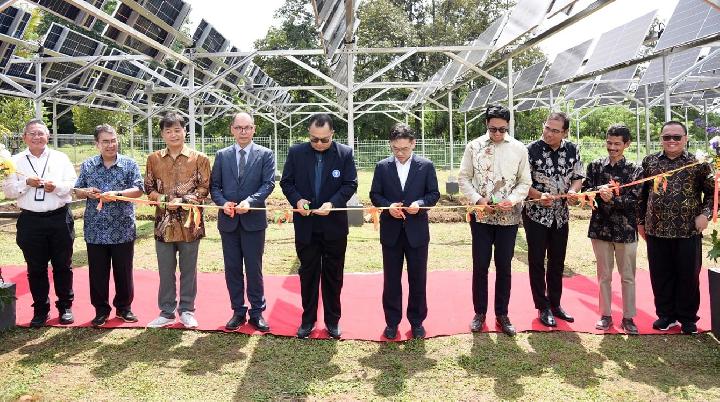IPB University has made a groundbreaking contribution to renewable energy and sustainable agriculture by inaugurating Indonesia's first agri-photovoltaic (APV) research station. This facility combines solar energy production with agricultural productivity, marking a significant leap forward in addressing energy and food security challenges.
What is Agrivoltaics?
Agrivoltaics refers to the simultaneous use of land for agriculture and solar power generation. Solar panels are strategically positioned to allow sunlight to reach crops while generating electricity. This approach supports sustainable farming practices and renewable energy adoption, enhancing land use efficiency.
IPB University’s Initiative
Located in Bogor, West Java, the research station is designed to explore the feasibility of integrating APV systems in Indonesia’s tropical climate. The project focuses on assessing crop yield under solar panels, soil health improvement, and energy output optimization. It is part of a global effort to innovate in sustainable energy solutions, aligning with Indonesia’s renewable energy goals.
Key Benefits of Agri-Photovoltaic Systems
- Increased Land Use Efficiency
- Agrivoltaic systems optimize land utilization by merging farming and solar energy production. This dual-use model ensures that both energy and food production coexist without compromising land availability.
- Improved Crop Performance
- Studies show that shading provided by solar panels can reduce water evaporation and protect crops from extreme weather, enhancing agricultural productivity in certain climates.
- Renewable Energy Promotion
- APV systems contribute to renewable energy generation, reducing dependence on fossil fuels and advancing climate goals.
- Economic Benefits
- Farmers can diversify income streams through renewable energy production while maintaining agricultural operations.
Global Context
Countries like Japan, Germany, and the United States have already implemented APV systems with promising results. For example, in Germany, agrivoltaics has shown a potential increase in land productivity by up to 60%. IPB University’s initiative positions Indonesia to join this global innovation wave.
Challenges in Agrivoltaics Implementation
While the potential is significant, challenges remain:
- High Initial Costs: Installing APV systems requires substantial investment, which might deter adoption in developing countries.
- Technical Barriers: Designing systems suitable for tropical climates demands advanced research and engineering.
- Policy Support: Regulatory frameworks need to evolve to facilitate the integration of agrivoltaic projects into national energy and agriculture strategies.
Future Implications
The success of this research station could pave the way for widespread adoption of agrivoltaic technology in Indonesia. By promoting policies and investments in APV systems, the country could address energy shortages while strengthening food security.
Conclusion
IPB University’s agri-photovoltaic research station represents a transformative step toward sustainable development. This initiative highlights the importance of innovation in achieving a balance between energy needs and agricultural sustainability, reinforcing Indonesia’s commitment to a greener future.
Read More






 Saturday, 06-12-25
Saturday, 06-12-25







